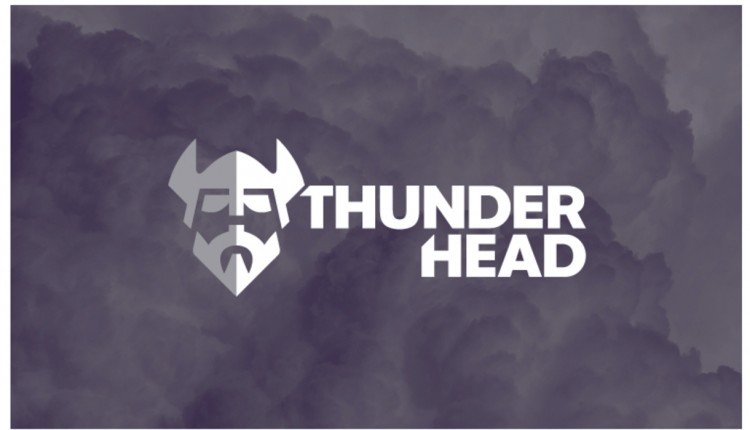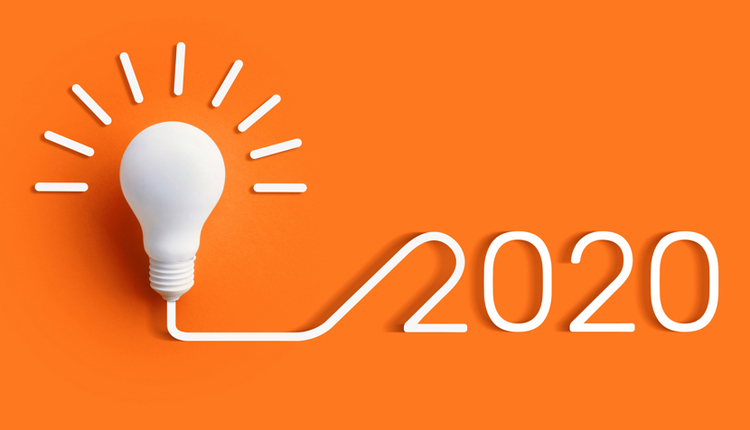
Quadient's omni-channel mobile preview with Inspire R12.
With its latest release of Quadient Inspire R12, global customer communications management (CCM) heavyweight Quadient has clearly set their sights on the digital experience.
This enhanced offering also introduces Quadient’s new cloud-based Digital Advantage Suite, a low-code development platform to quickly deploy personalized mobile applications and web experiences. Intuitive functionalities, like drag-and-drop components, are expected to debut in November, allowing users to easily integrate customized digital experiences within their existing web and mobile pages or create standalone, native mobile apps with very little coding required. In this decisive move, it appears that Quadient is poised to bring all their omni-channel prowess to the digital-first movement.
The Digital Advantage Suite is packaged with more than 100 pre-built HTML5 widgets that can be further developed using customer data from an organization’s core systems. According to Quadient, this new offering is positioned to deliver traditional design rules and the required data out to a new channel in a way that saves mobile and web development time. The Digital Advantage Suite also supports device fingerprint and face ID readers for app security, e-signatures, optical character recognition capabilities to turn images into data for forms input, and push notifications within mobile apps and web pages (including Apple Watch and Wear OS, formerly Android Wear). Integrated with Inspire Interactive, it provides a web-based interface for business users to edit and manage content blocks across digital touchpoints as well.
Back in 2017, Quadient intimated their intent to bring outsourced digital projects back into the enterprise. Traditionally, enterprises have struggled over the years to deliver seamless digital experiences due to disparate systems, reduplicated work, and siloed channels and teams. As enterprises add more channels, the proliferation of small projects, competing lines of business, and various third parties makes the digital strategy much more difficult to manage within the context of the customer. A differentiating factor in Quadient’s customer experience (CX) strategy has been their continuing focus on executing communications, often operational in nature, across multiple channels.
Scott Draeger, Vice President of Product Marketing at Quadient, tells DOCUMENT Strategy that this latest move “is as much about pursuing digital-first projects as it is about following the billions and trillions of communications being produced today and taking them to new channels. We're giving them a path to get to the digital world.”
In modern times, CX strategies have quickly evolved to anticipating customer outcomes—or what customers are actually trying to achieve. Forrester Vice President and Principal Analyst Craig Le Clair reports that “automation technologies have advanced to the point that you can take all the individual channels (and all the information and activity in those channels) into an analytic repository using various artificial intelligence (AI) building blocks to normalize the information, so you can dynamically figure out what the customer is trying to do. You can make those connections.”
The Digital Advantage Suite is packaged with more than 100 pre-built HTML5 widgets that can be further developed using customer data from an organization’s core systems. According to Quadient, this new offering is positioned to deliver traditional design rules and the required data out to a new channel in a way that saves mobile and web development time. The Digital Advantage Suite also supports device fingerprint and face ID readers for app security, e-signatures, optical character recognition capabilities to turn images into data for forms input, and push notifications within mobile apps and web pages (including Apple Watch and Wear OS, formerly Android Wear). Integrated with Inspire Interactive, it provides a web-based interface for business users to edit and manage content blocks across digital touchpoints as well.
Back in 2017, Quadient intimated their intent to bring outsourced digital projects back into the enterprise. Traditionally, enterprises have struggled over the years to deliver seamless digital experiences due to disparate systems, reduplicated work, and siloed channels and teams. As enterprises add more channels, the proliferation of small projects, competing lines of business, and various third parties makes the digital strategy much more difficult to manage within the context of the customer. A differentiating factor in Quadient’s customer experience (CX) strategy has been their continuing focus on executing communications, often operational in nature, across multiple channels.
Scott Draeger, Vice President of Product Marketing at Quadient, tells DOCUMENT Strategy that this latest move “is as much about pursuing digital-first projects as it is about following the billions and trillions of communications being produced today and taking them to new channels. We're giving them a path to get to the digital world.”
In modern times, CX strategies have quickly evolved to anticipating customer outcomes—or what customers are actually trying to achieve. Forrester Vice President and Principal Analyst Craig Le Clair reports that “automation technologies have advanced to the point that you can take all the individual channels (and all the information and activity in those channels) into an analytic repository using various artificial intelligence (AI) building blocks to normalize the information, so you can dynamically figure out what the customer is trying to do. You can make those connections.”
As traditional, structured CCM continues to decline, it is this link to process automation and content analytics that offers intrinsic value to organizations today. Therefore, we are witnessing the predominance of omni-channel orchestration within the CCM market.
Quadient has long been the darling of market analysts for their work in omni-channel design and delivery, a contributing factor for their sustained leadership position within CCM for the past five years. In 2013, R9 introduced their new engine that supported responsive design, followed by R10 in 2015 with their omni-channel proofing, then they added customer journey context (via their cloud-based tool that aims to connect print and digital communications to all touchpoints along the customer journey) in R11, and, with R12, embedded omni-channel coordination through delivery rules, channel properties, and preference management.
Quadient has long been the darling of market analysts for their work in omni-channel design and delivery, a contributing factor for their sustained leadership position within CCM for the past five years. In 2013, R9 introduced their new engine that supported responsive design, followed by R10 in 2015 with their omni-channel proofing, then they added customer journey context (via their cloud-based tool that aims to connect print and digital communications to all touchpoints along the customer journey) in R11, and, with R12, embedded omni-channel coordination through delivery rules, channel properties, and preference management.
Mr. Draeger simply explains the idea of coordination by saying, “We let the communication be in charge, not the channel. Coordination is making sure that messages cascade across an array of channels, making automatic adaptations when needed, such as a missed delivery, a non-response, or incorrect address. Our approach is that you should put all of those channels in one single stream, so the communication selects its own channel during the process.”
As mentioned previously, many of Quadient’s customer engagement management products (all of which are offered as software as a service on the Microsoft Azure platform) are positioned to support the overall CX ecosystem, not as a distinct replacement for these existing systems. In a recent evaluation of Quadient’s CX strategy, Kaspar Roos, Founder of Aspire Customer Communications Services, notes that “a strong differentiator in Quadient’s CX approach is that it aims to develop technology that helps its customers overcome siloes, in particular, by linking professionals in lines-of-business with customer experience and customer communications teams.”
The Quadient Digital Advantage Suite can be seen as the latest addition to completing the vision of total omni-channel coordination rather than commoditizing services already in the market. “We will continue to focus on ways to manage a customer experience portfolio that executes across multiple channels from a project and engagement perspective within the organization,” said Mr. Draeger. “We know that by putting communications within the context of the customer journey, we've made something impossible to understand easy to manage.”
It’s interesting to note that Quadient does not offer an online editor of their Inspire Designer (beyond managing simple documents with their web-based Interactive tool), as more and more of their competitors bring to market web design tools. This could be due to their cloud strategy, which emphasized innovations to make communications better, like analytics, customer journey mapping, and email and SMS delivery, rather than simply putting CCM capabilities in the cloud. According to Quadient, “We don’t find that especially impressive as a business model.”
In recent years, Quadient has been evolving from their on-premises licensing model to the more popular subscription pricing models. However, customers still report high costs associated with components that are offered at an extra cost.
In 2017, Neopost combined three of its prior acquisitions (GMC Software, Satori Software, and Human Inference) to form one unified set of services under the rebranded company of Quadient. Since that time, the new company has aggressively pursued market growth in the financial services and insurance industries and expanded its footprint in the ever-fragmented world of customer experience.
As mentioned previously, many of Quadient’s customer engagement management products (all of which are offered as software as a service on the Microsoft Azure platform) are positioned to support the overall CX ecosystem, not as a distinct replacement for these existing systems. In a recent evaluation of Quadient’s CX strategy, Kaspar Roos, Founder of Aspire Customer Communications Services, notes that “a strong differentiator in Quadient’s CX approach is that it aims to develop technology that helps its customers overcome siloes, in particular, by linking professionals in lines-of-business with customer experience and customer communications teams.”
The Quadient Digital Advantage Suite can be seen as the latest addition to completing the vision of total omni-channel coordination rather than commoditizing services already in the market. “We will continue to focus on ways to manage a customer experience portfolio that executes across multiple channels from a project and engagement perspective within the organization,” said Mr. Draeger. “We know that by putting communications within the context of the customer journey, we've made something impossible to understand easy to manage.”
It’s interesting to note that Quadient does not offer an online editor of their Inspire Designer (beyond managing simple documents with their web-based Interactive tool), as more and more of their competitors bring to market web design tools. This could be due to their cloud strategy, which emphasized innovations to make communications better, like analytics, customer journey mapping, and email and SMS delivery, rather than simply putting CCM capabilities in the cloud. According to Quadient, “We don’t find that especially impressive as a business model.”
In recent years, Quadient has been evolving from their on-premises licensing model to the more popular subscription pricing models. However, customers still report high costs associated with components that are offered at an extra cost.
In 2017, Neopost combined three of its prior acquisitions (GMC Software, Satori Software, and Human Inference) to form one unified set of services under the rebranded company of Quadient. Since that time, the new company has aggressively pursued market growth in the financial services and insurance industries and expanded its footprint in the ever-fragmented world of customer experience.
Allison Lloyd serves as the Editor of DOCUMENT Strategy Media. She delivers thought leadership on strategic and plan-based solutions for managing the entire document, communication, and information process. Follow her on Twitter @AllisonYLloyd.













